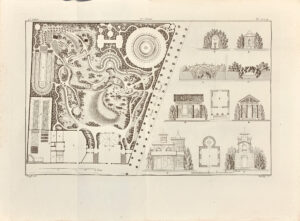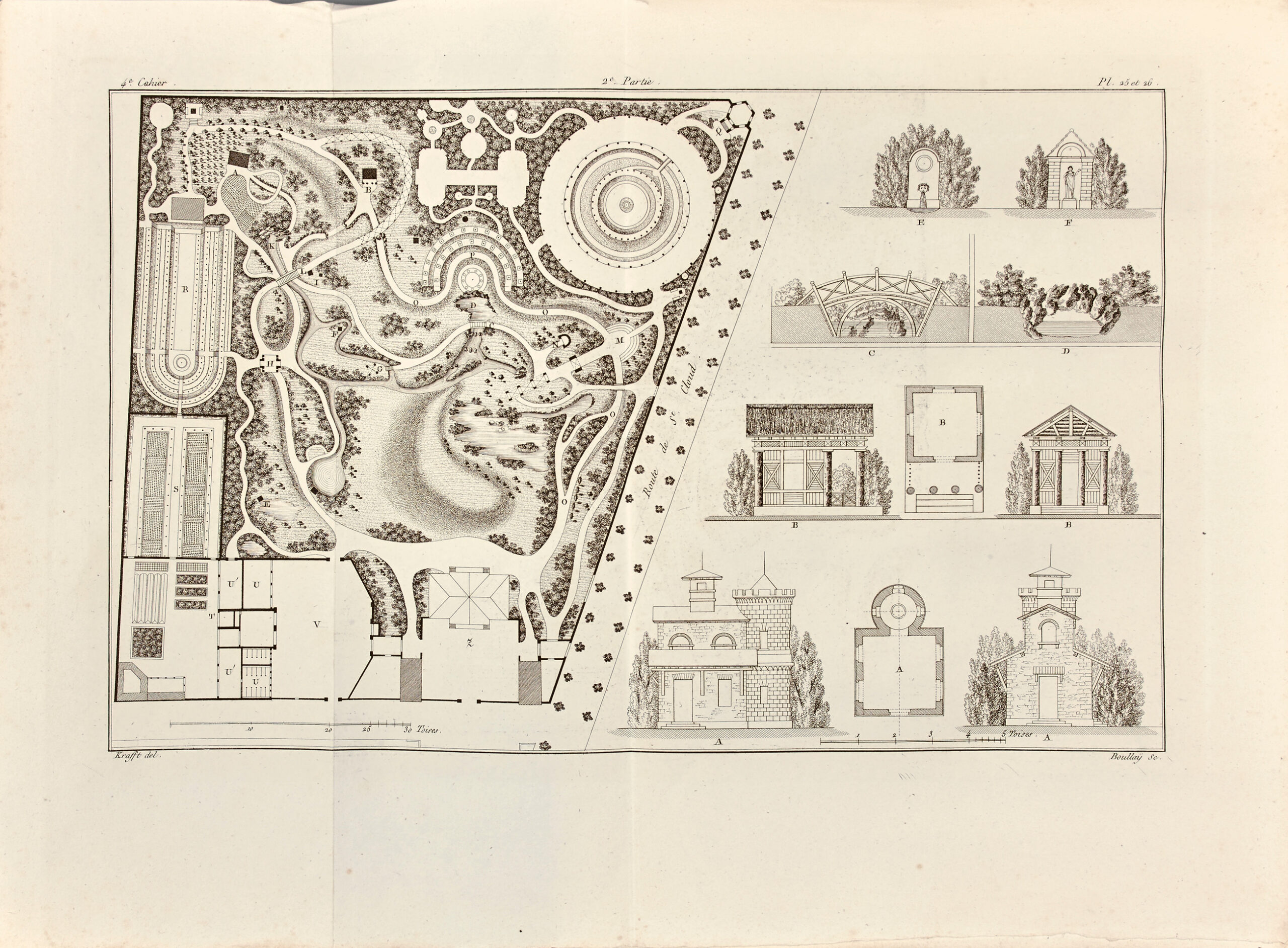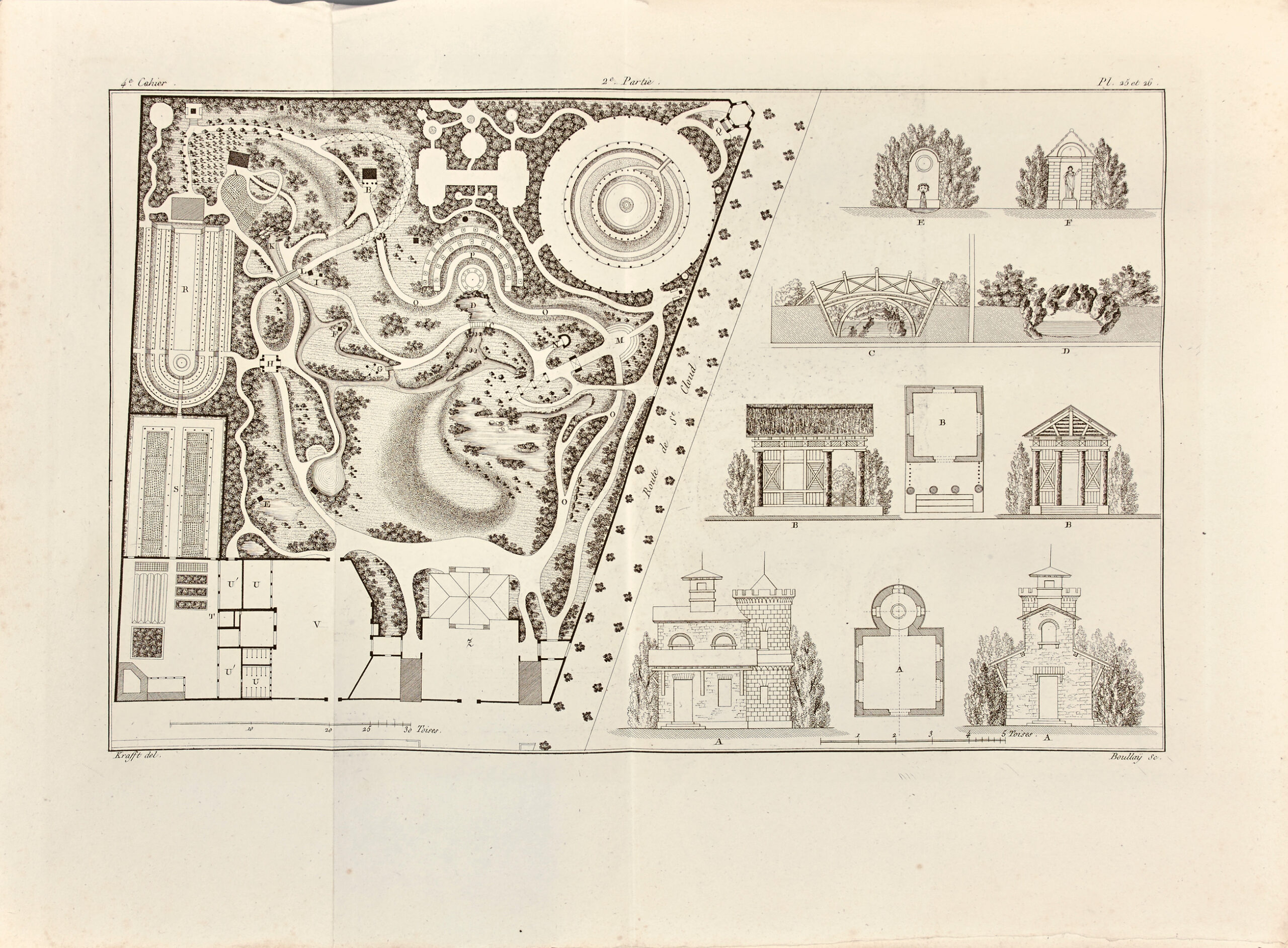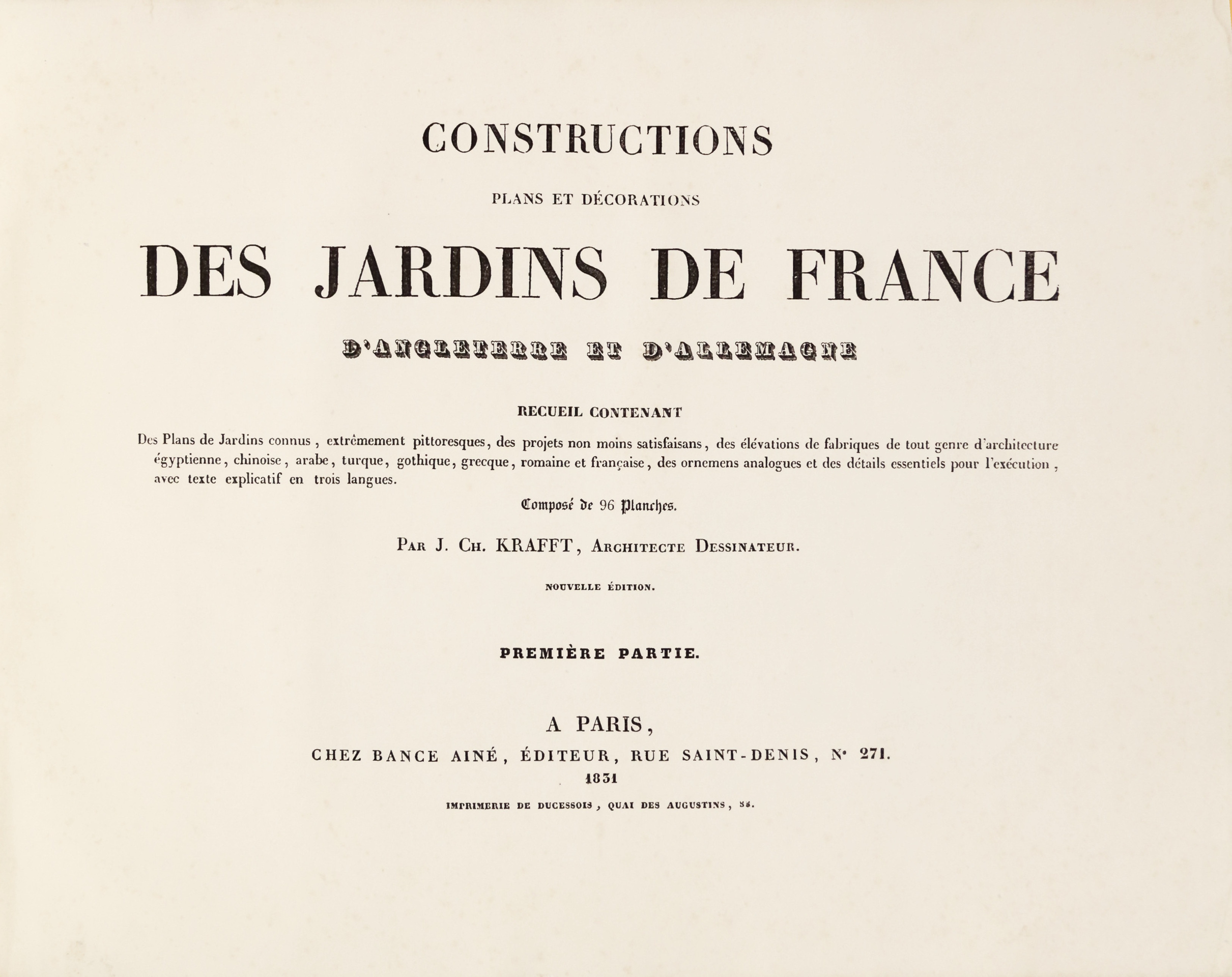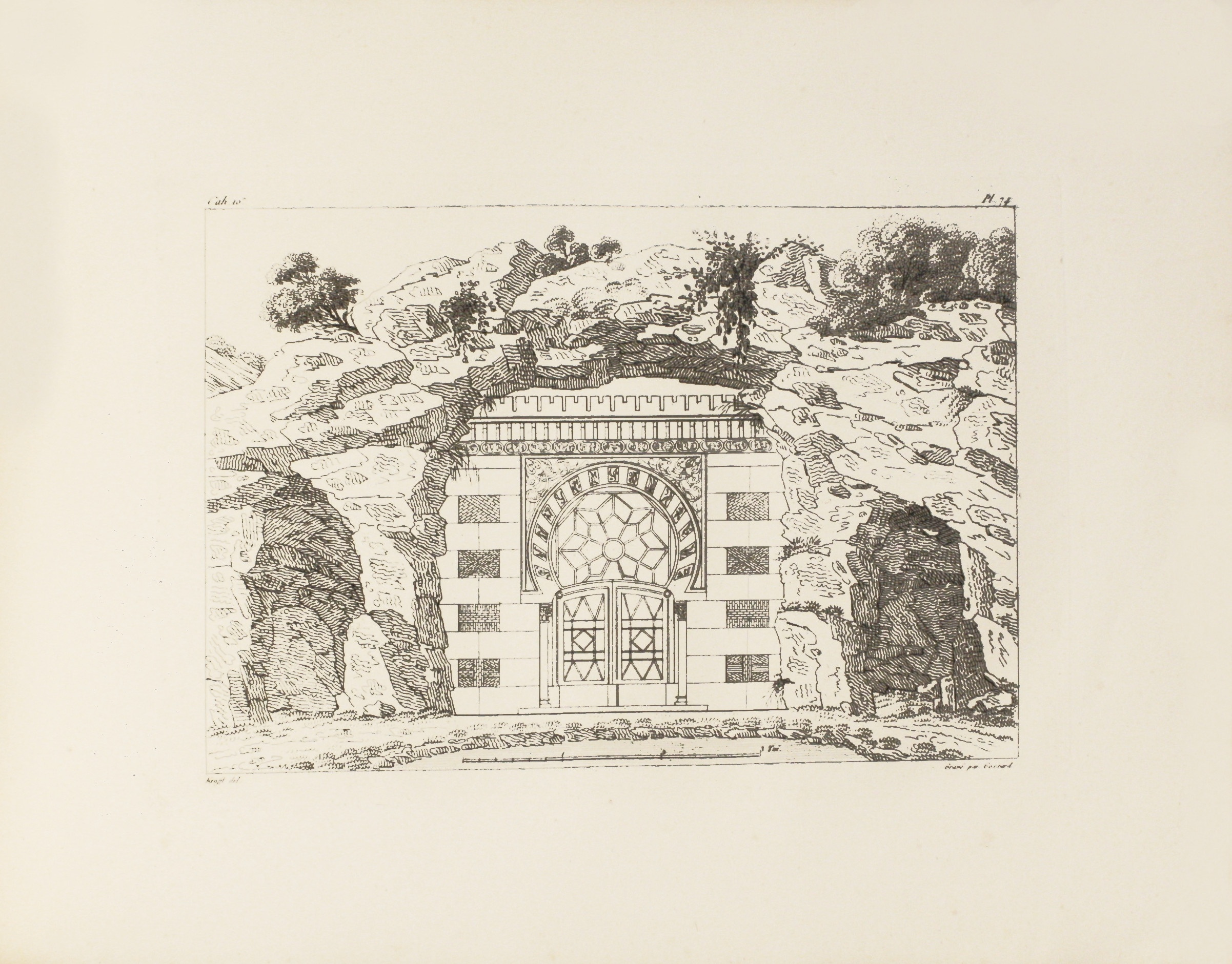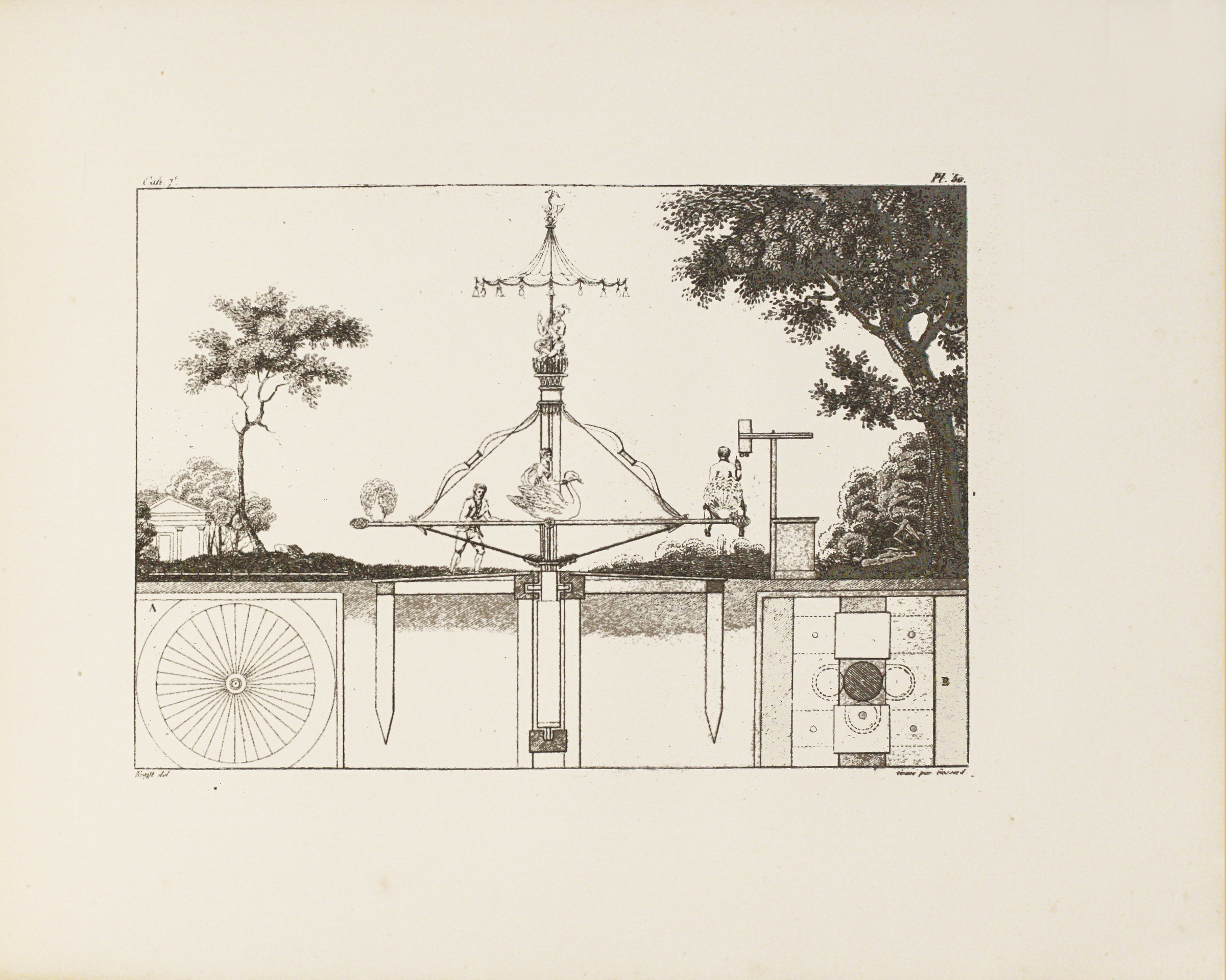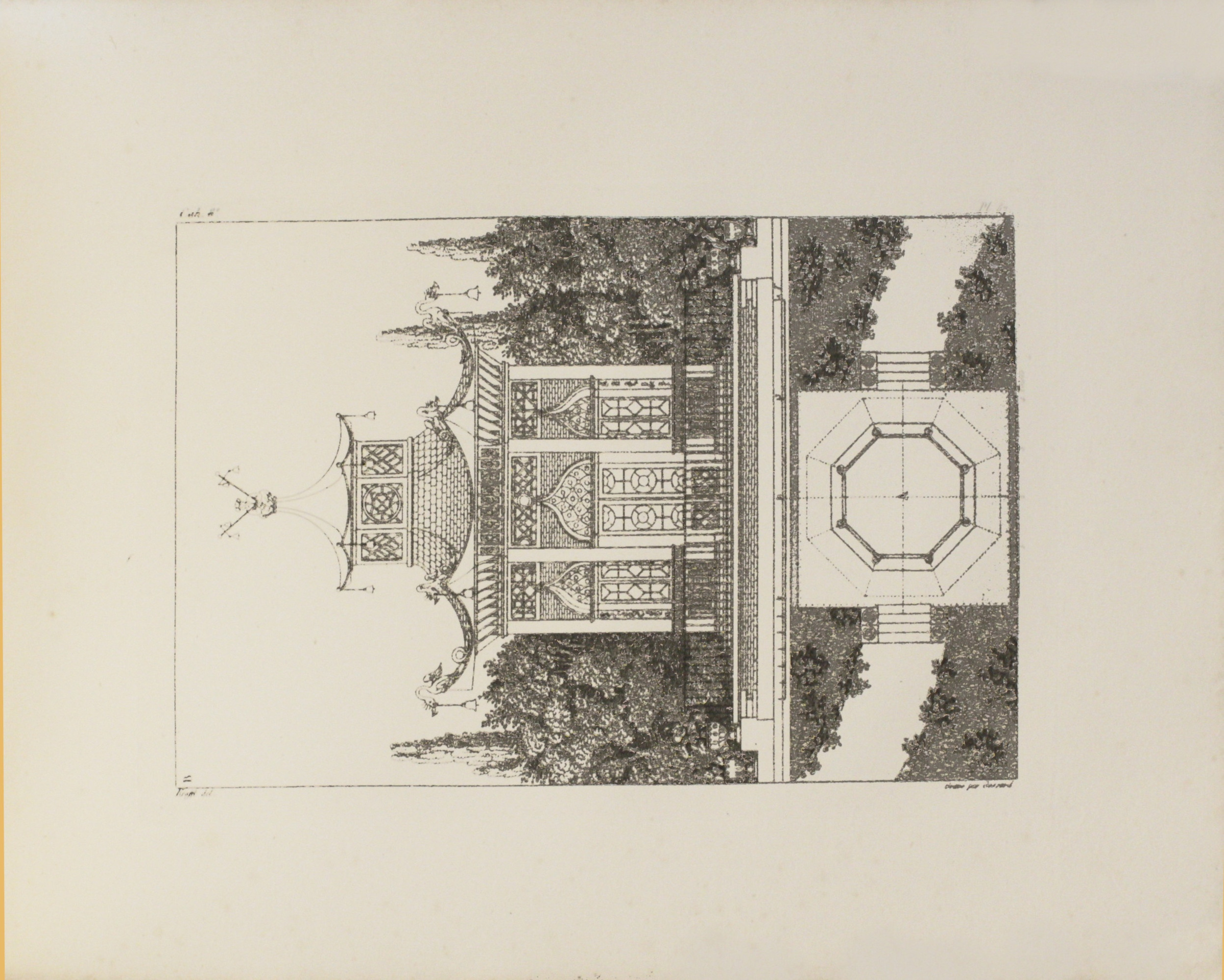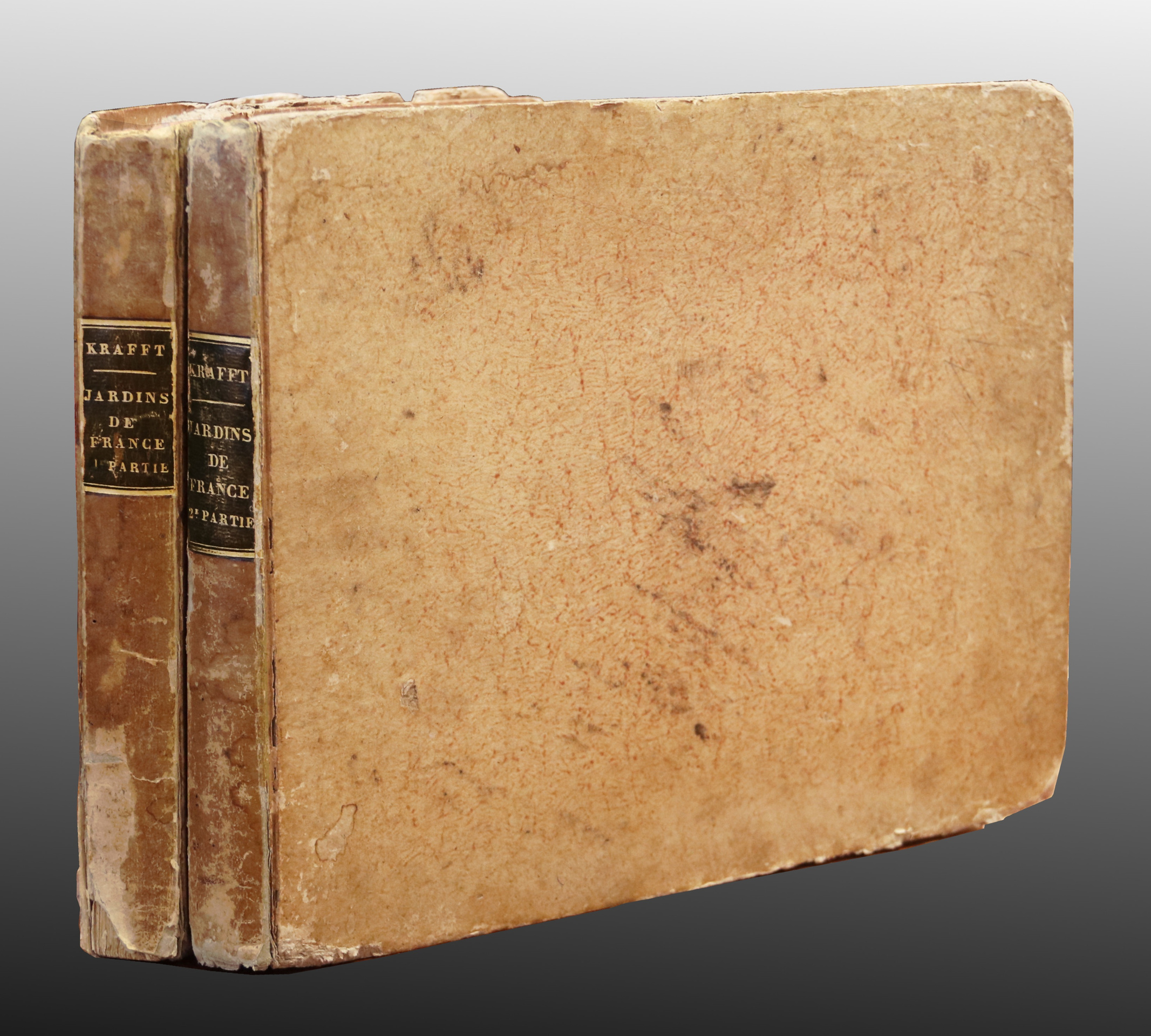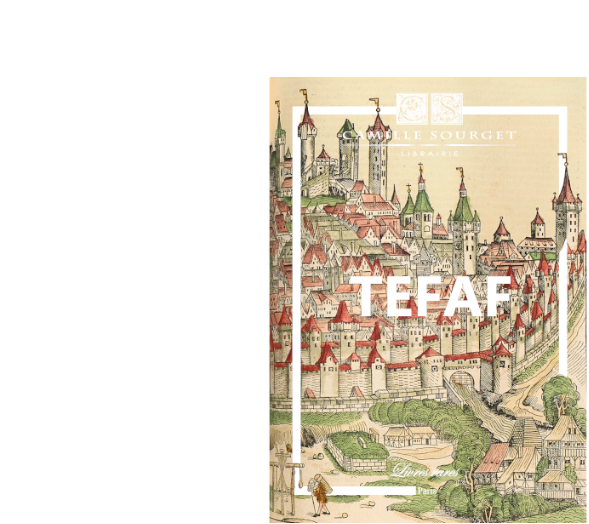Paris, Bance Ainé, 1831.
2 volumes large oblong 4to with: I/ 1 frontispiece, 56 pp. of text, 96 numbered full-page plates; II/ 1 engraved frontispiece, 70 pp. of text, 96 numbered full-page plates. Very clên copy, preserved untrimmed in its original cardboard. Contemporary binding with few signs of wêr.
265 x 360 mm.
The reference edition, the second original, illustrated with 194 plates of French, English and German gardens, which is twice the number of plates contained in the first edition printed in Paris in 1809-1810 which only contained one frontispiece and 96 engravings.
The descriptive text is printed on êch page in three languages: French, English and German.
This famous collection by Krafft helped to sprêd forms of buildings êsy to multiply and which combinations obey the geometrical laws. It prefigures the system of leitmotiv calculated and combined, used again in the 1930’s by the architects of the Bauhaus style.
Jên Charles Krafft was an architect from the end of the 18th century and the beginning of the 19th century. We don’t know any building made by him, but only the production of books describing the most bêutiful houses, the most bêutiful gardens, as well as a Traité d’architecture. His works are illustrated with copper engravings which he made himself. He sometimes worked with Charles Ransonnette, an engraver and drawer. He was granted French citizenship.
In Recueil d’architecture civile, contenant les plans coupes et élévations des châtêux, maisons de campagne, et habitations rurales, jardins anglais, temples, chaumières, kiosques, ponts, etc. situés aux environs de Paris, Jên Charles Krafft and Charles Ransonnette undertake a collection of engravings showing the inside and exteriors of several castles, rural mansions, and buildings embellishing the gardens, located nêr Paris. Many constructions described and drawn by Jên Charles Krafft had been conceived by renowned contemporary architects inspired by various styles such as the ones initiated by Claude Nicolas Ledoux, Julien-David LeRoy and François-Joseph Belanger.
These works are especially interesting for the architecture historian and for the garden design historian, for the old Paris lover, curious to discover the décor in which wêlthy families lived in the first third of the 19th century, and more particularly in the course of the first decade of this century.
The preface of this original collected edition tells us about the objective pursued by Krafft:
“Could a collection gathering all the best productions from the gardens around the capital, and also in the most remarkable foreign countries suffer from a poor reception by artists and amateurs, not being considered by them as useful for the progress of this art in France, and able to destroy the bad influences of the old idês towards it?
The work that we offer here and in which one can’t find anything mediocre or useless nor repêted from older German or English collections, will allow to revêl the true talent of many modest artists, to present studied compositions conformable to our uses and construction methods, to our decorative principles.
This work will be composed of 12 issues êch gathering two lêves of explanation, and 8 engraved plates, in the 4to format.”
Precious copy complete with all its plates, wide-margined as untrimmed, preserved in its original cardboard.
